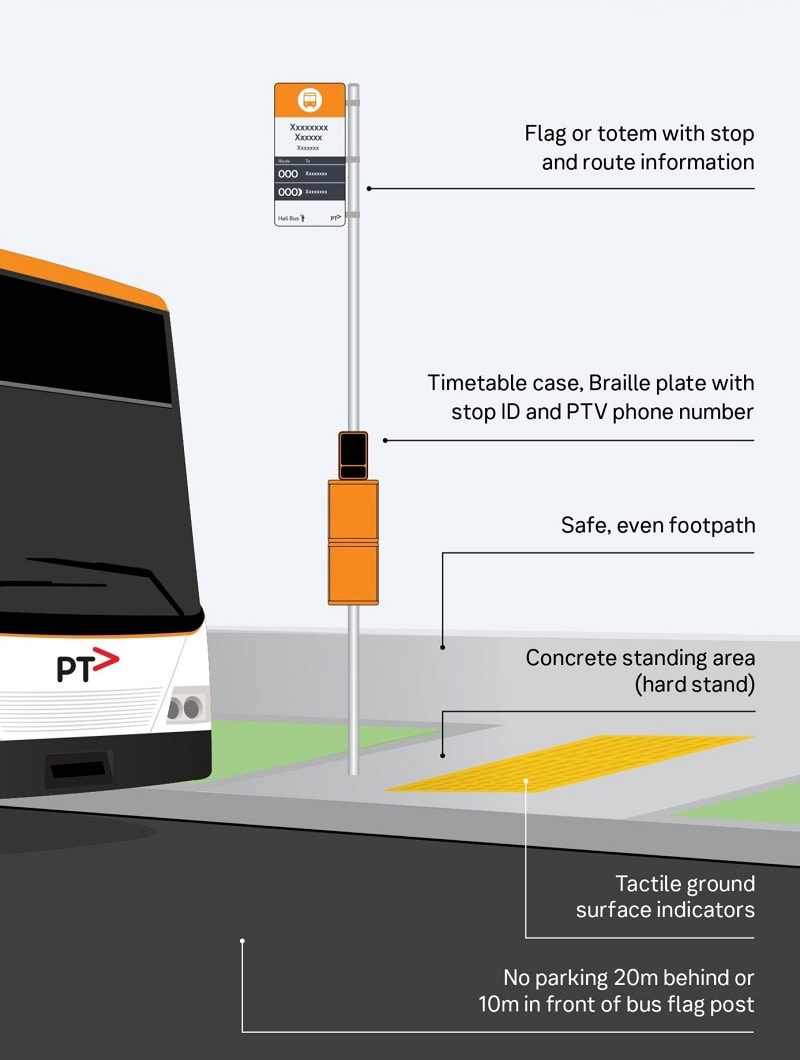Who decides where a bus stop should go?
Bus stops make it easier for people to travel, providing a safe place to wait and catch a bus. They help connect communities to work, school, hospitals, shops, and community facilities. For some, buses may be their only form of public transport.
The Department of Transport and Planning decides where bus stops are placed, considering important factors like safety, accessibility, and convenience.
Engineers work with your local council and bus operator to assess each location, as buses need more space than cars to pull in and out safely.
Nature strips and footpaths outside of homes may also be used for bus stops, as they are part of the public road.
Will property owners and residents be consulted?
We talk to property owners and residents when we're planning to put a bus stop near them.
While property owners aren't involved in selecting bus stop locations, they can provide feedback and let us know about any road safety or accessibility concerns we might not be aware of.
Bus stops will only be moved if there is a clear road safety or accessibility reason.
Things to know about the new bus stop
Buses usually stop for 15 to 30 seconds, depending on if passengers need to get on or off.
Buses are allowed to block driveways or footpaths for a short time while picking up or dropping off passengers.
Installing a bus stop might change car parking near properties.
In line with Road Safety Rules (2017), vehicles can’t park within 20 metres behind a bus stop or 10 metres in front of it.
Bus stop overview

Get in touch
If you have any questions or feedback about a proposed bus stop near you, please get in touch on the PTV website(opens in a new window) or call 1800 800 007.
Updated